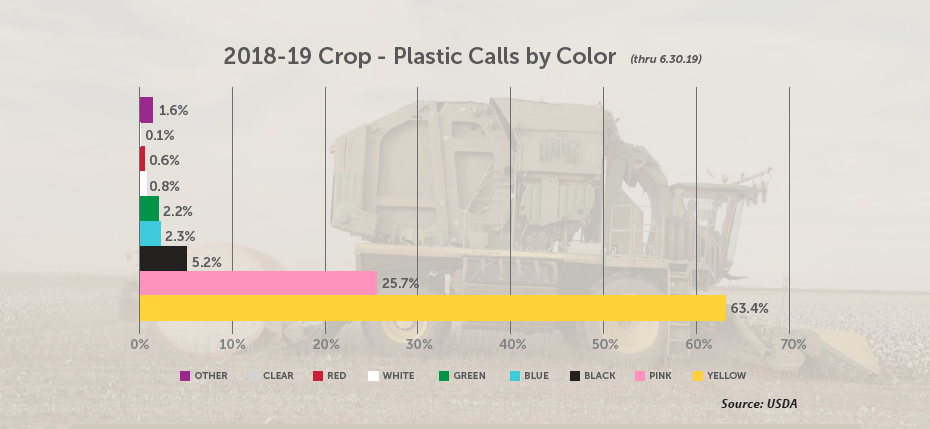By Blair McCowen
What if there was an issue at hand that was almost entirely preventable, and was decreasing the value of farmers’ hard-earned production and harming the reputation of U.S. cotton worldwide? What if there were solutions to help solve the problem that only needed to be adopted?
Cotton contamination in the United States is an issue that has quickly worsened over time. While it comes in a variety of forms, the most prominent is plastic contamination from trash, litter, and module wraps. In order to protect U.S. cotton’s reputation of being one of the cleanest and highest quality fibers in the world, there is an urgent need for each step of the supply chain to work together to help eliminate contamination before the fiber reaches textile mills. U.S. cotton is marketed as a premium, value-added product, and it is important that this is the type of product delivered to customers. As the National Cotton Council states in its Prevention of Plastic Contamination video series, price is not the only opportunity for producers to add value to their crops – an equally important part is delivering on brand promise.
Most often, plastic contamination unintentionally occurs at the farm due to faulty module wraps or trash that is blown into the field and picked up by machinery during harvest. The NCC reported in 2017 that the source of more than 88 percent of cotton contamination was plastic module wraps. During the ginning process, what first starts as a piece of plastic in a bale quickly gets transformed into smaller pieces that can find their way into other goods if left undetected. When the contaminated cotton reaches the textile mill and is discovered, operations must be slowed until the contamination is removed, causing frustration and costing the mill time and money. While there are research groups working continuously on methods to detect and remove the plastic contamination already in the supply chain, there are also other actions producers and gins can take to aid their efforts, according to the NCC.

At the Farm and Gin Levels
Keeping plastic contamination out of the supply chain first starts at the farm and gin. In the field, growers should check for trash and faulty module wrapping that could become a problem at the gin, and make sure equipment and machinery remain clear of any debris throughout harvest.
Ginners must work to ensure plastic module wraps are removed from the modules properly and that any other plastic is removed before the module enters the feeder. Employee training on proper ways to remove and inspect for these issues is also key to getting ahead of the potential problem.
Next Steps
As this upcoming harvest season approaches, one goal for industry individuals should be to reduce the number of contaminated cotton bales entering the supply chain. More specifically, bales that have been labeled as 71-72 extraneous matter by the USDA classing office.
These bales should not be re-classed as a result of the reduction in the loan value of that cotton. In most cases, the cost of re-classing the bales does not typically bring the return on investment many hope for. Reclassing already contaminated bales also increases the chance that plastic could still continue through the next levels of the supply chain. As cotton moves throughout the supply chain, plastic contaminants could have larger adverse economic impacts for respective businesses when they are found in the manufacturing process.
“I would encourage growers and gins to utilize available resources to educate themselves on how to eliminate plastic contamination,” said PCCA President and CEO Kevin Brinkley. “The National Cotton Council has put together educational videos explaining what can be done to reduce contamination issues at each level of the supply chain.”
Removing plastic contamination from the supply chain of cotton is a goal that can and will be reached with each industry sector working together. Leading the charge in these efforts is the NCC Lint Contamination Task Force of which Brinkley is a member. Keeping U.S. cotton at the helm of its quality and sustainability reputation is pertinent to the strength of the industry and its grower-owners.
“The U.S. wants to continue to be a trusted source of high-quality cotton fiber to textile mills around the world,” Brinkley said. “Our grower-owners are some of the most responsible and sustainable in the world, and we want to prove that we can deliver a product to the rest of the world that represents their caring and innovative farming practices.”
For more detailed steps on how to keep plastic out of the supply chain of cotton, as well as access to the NCC Prevention of Plastic Contamination Video Series, visit cotton.org/tech/quality/contamfree.cfm.


